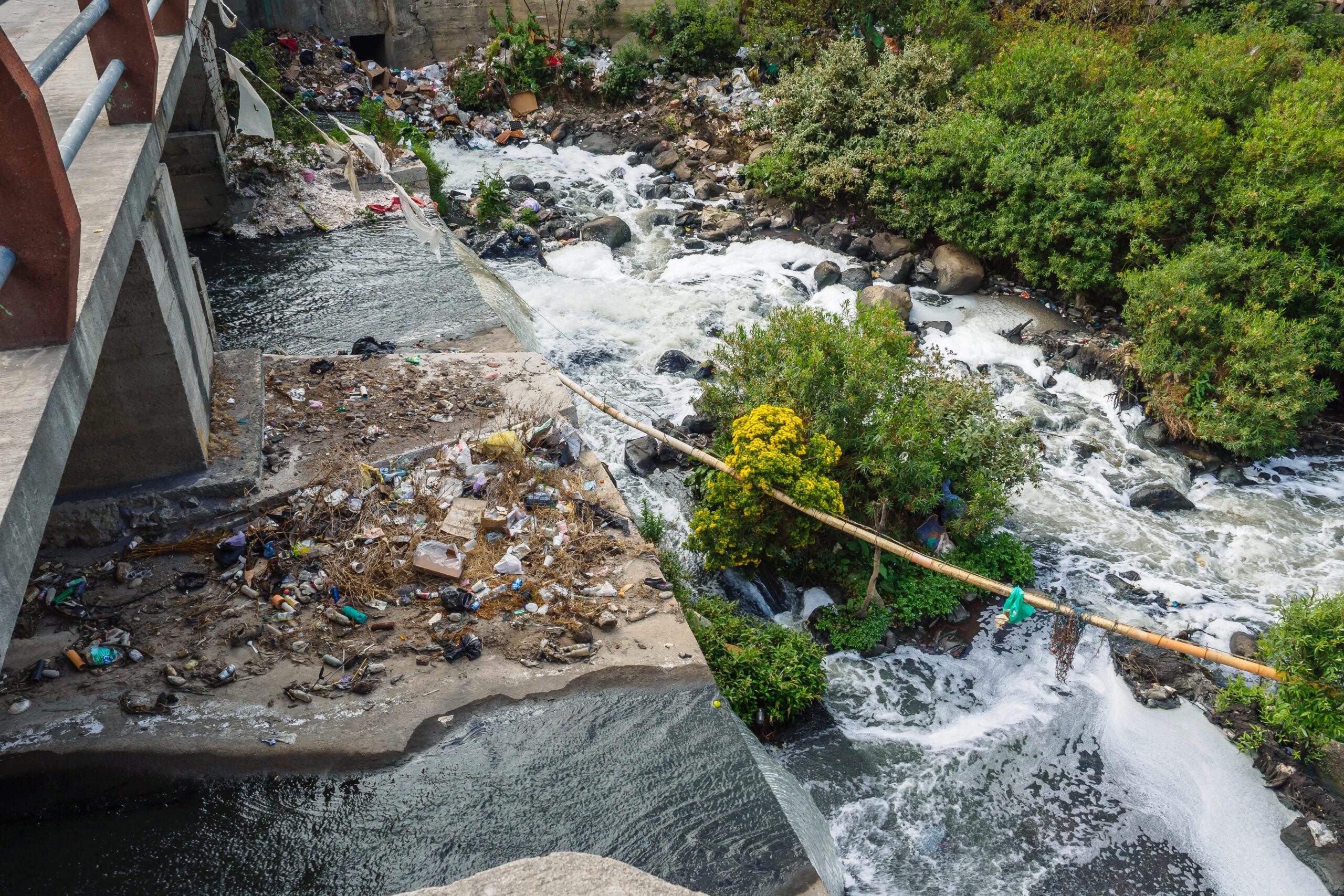A wet, heavy snow falls. It accumulates on sidewalks and roads, creating perfect conditions for cars to skid out of control and for people to slip and fall. Dump trucks spray salt and sand on roads. Rock salt is dispersed onto sidewalks and walkways. It continues to snow, but the sidewalks and roads stay clear, the snowflakes melting when they make contact with the pavement.
Eventually, the storm ends, but not without leaving behind snow and ice on surfaces that missed the salt-or-sand treatment. The snow and ice remain until the sun comes out and the temperatures rise above 32°F, at which point it begins to melt. The resulting water spills into storm drains, puddles in potholes, and rushes down streets in temporary streams—looking for ways to permeate these impervious surfaces and soak into the ground. Meanwhile, the de-icing chemicals build up and pollute the stormwater as it travels and makes its way towards larger bodies of water.
This polluted snowmelt is known as runoff. Runoff flows into storm sewer systems, lakes, streams, rivers, wetlands, and coastal waters—bringing unwanted chemicals and materials into aquatic ecosystems. Runoff is particularly damaging to these ecosystems and can harm the species and organisms that call these bodies of water home.
In de-icing products, the most common chemical is chlorine and the most common compound is sodium chloride. Other common salts in de-icing products are magnesium chloride, potassium chloride, and calcium chloride. When any of these compounds come in contact with precipitation, the precipitation’s freezing point drops and it melts into water.
In addition to these dry chlorides, liquid chlorides and dyes are sometimes added to further decrease the freezing point and to make it easier to see where the chloride has been applied. These additives, however, can cause extensive damage to the environment. Liquid chloride can quickly leach out of dry chloride crystals and, as opposed to helping melt the snow, corrodes vehicles and infrastructure, prevents plants from absorbing necessary nutrients and water, and activates heavy metals in the soil that can diminish groundwater health. Added dyes can stain and damage concrete and have the potential to decay products, which become more toxic than dry chloride.
These dyes and chlorides are all washed away by snowmelt and become pollutants in runoff. Other runoff pollutants include grass clippings, sewage, and fertilizers, all of which are often rich in nitrogen and phosphorus—chemicals that help algae grow and organisms die.
While phosphorus isn’t an inherently harmful nutrient—it is essential for plant and animal growth—an excess amount of the chemical element is particularly harmful in rivers and lakes. The surplus phosphorus quickens the eutrophication process, which occurs when an increase in minerals and organic nutrients reduces the amount of dissolved oxygen in bodies of water. Phosphorus causes a decrease in oxygen levels, and is therefore detrimental to many marine animals that rely on oxygen to survive. An excessive amount of phosphorus also contributes to the growth of toxic algal blooms. Blooms aren’t directly toxic to marine life, but they are also not beneficial. When the blooms die, bacteria break them down and the algae starts to decay. As the algae decays, it consumes oxygen and can create dead zones—areas with low oxygen levels in which fish and other aquatic life cannot survive.
Despite efforts to make change, water pollution and stormwater runoff are still major issues in many cities, including Boston. Phosphorus discharges are particularly prevalent in Boston because sewers often overflow. Since 80 percent of Greater Boston is paved, there are very few areas for stormwater to permeate into the ground. It is therefore difficult to filter out pollutants. If Boston had more porous pavement, stormwater would have more opportunities to infiltrate the ground. This would decrease the amount of runoff, quicken snow and ice melt, and decrease the amount of chloride salts needed to keep roads and sidewalks safe.
Sources
2010, 1st F. (2010, February 1). Breaking the Ice: An Overview of De-icing and Anti-icing Techniques. American City and County. Retrieved March 19, 2022, from https://www.americancityandcounty.com/2010/02/01/breaking-the-ice-an-overview-of-de-icing-and-anti-icing-techniques/
Condon, C., Condon, C., Kilbourne, C., & Staff, E. H. S. D. A. (2017, August 22). Avoiding Stormwater Pollution Due to Ice and Snow. EHS Daily Advisor. Retrieved March 19, 2022, from https://ehsdailyadvisor.blr.com/2012/11/avoiding-stormwater-pollution-due-to-ice-and-snow/
Environmental Protection Agency. (n.d.). Environmental Challenges for the Charles River. EPA. Retrieved March 18, 2022, from https://www.epa.gov/charlesriver/environmental-challenges-charles-river
Klein, E., & EMILEE KLEIN https://binjonline.com/author/emilee-klein/. (2021, July 25). The Flood: Mass Has a Runoff Problem. What’s Being Done? BINJ. Retrieved March 19, 2022, from https://binjonline.com/2021/07/25/the-flood-mass-has-a-runoff-problem-whats-being-done/
Loeffler, B. (n.d.). The Chemistry of Deicing: How Does Ice Melt Work? Ice Slicer Blog. Retrieved March 19, 2022, from https://blog.iceslicer.com/the-chemical-composition-of-deicers
Phosphorus and Water Completed. Phosphorus and Water | U.S. Geological Survey. (n.d.). Retrieved March 18, 2022, from https://www.usgs.gov/special-topics/water-science-school/science/phosphorus-and-water

